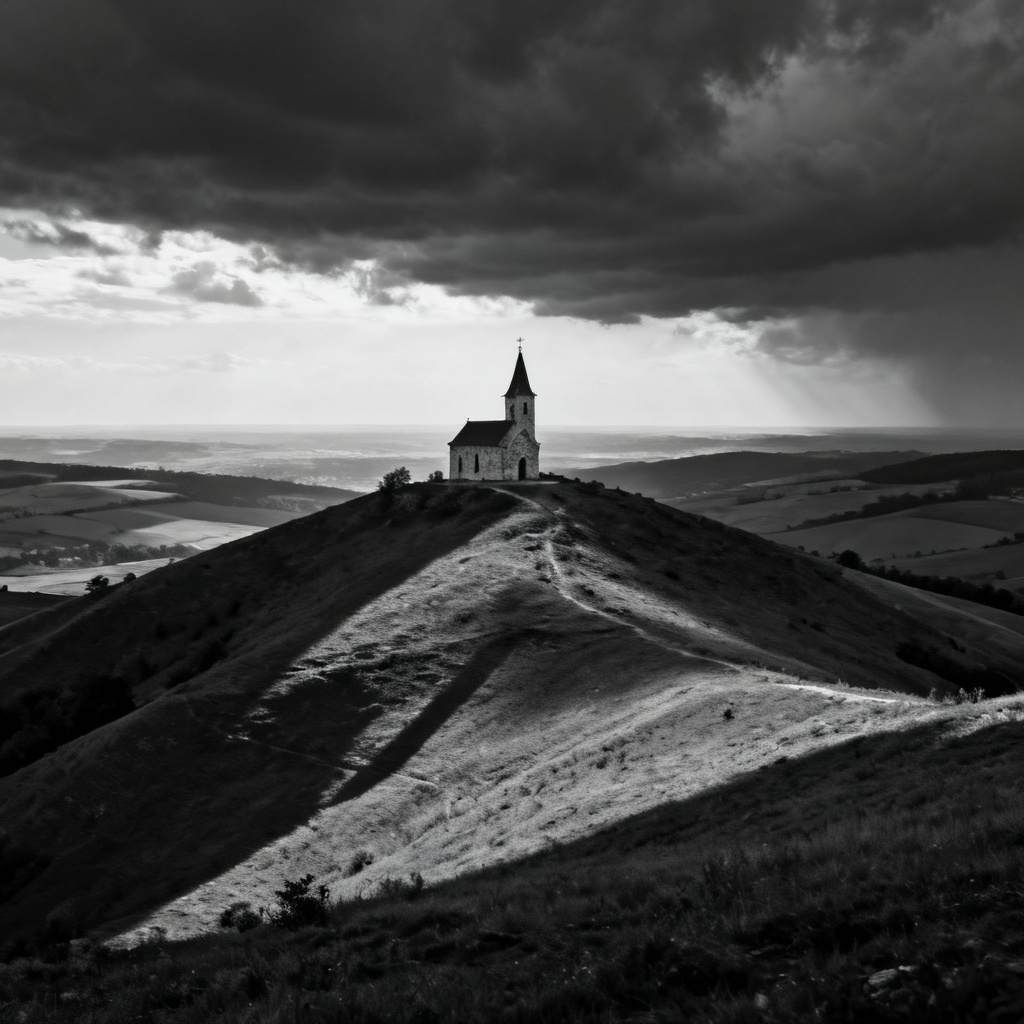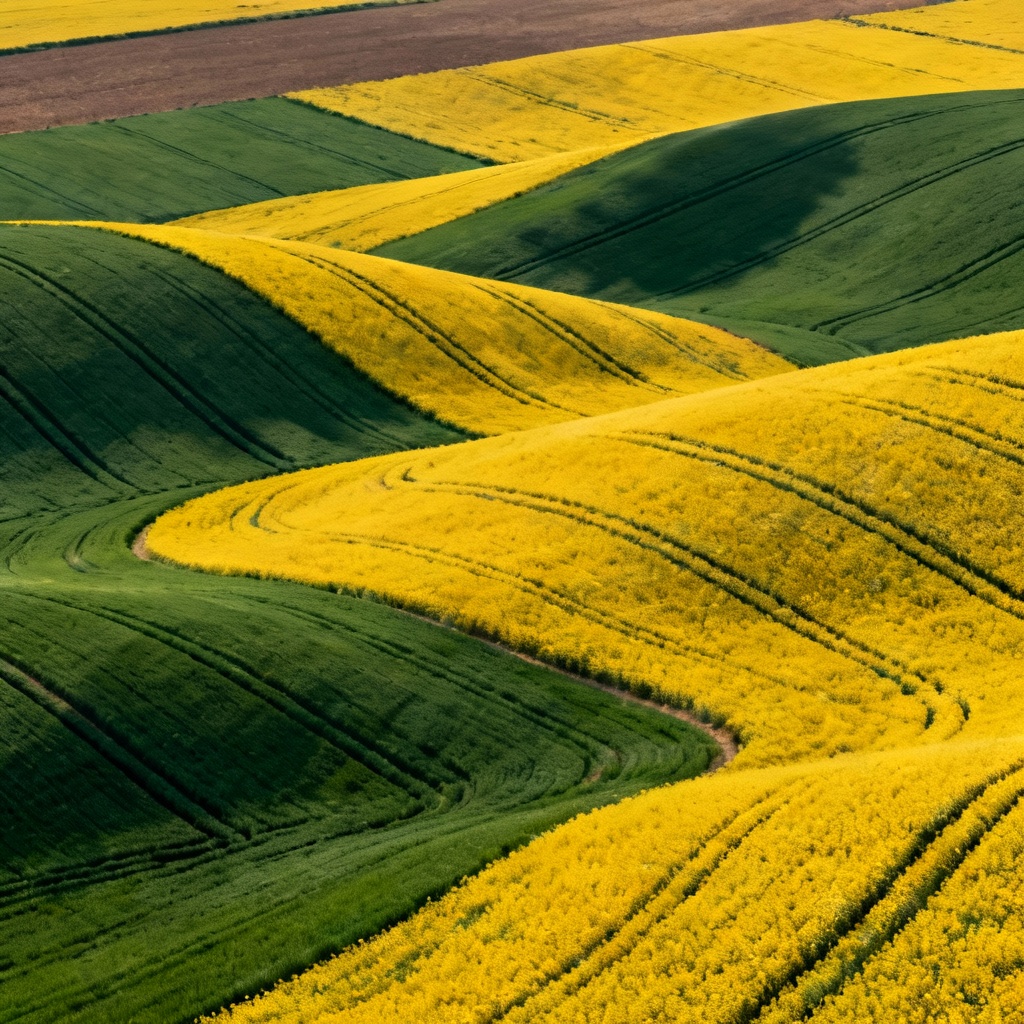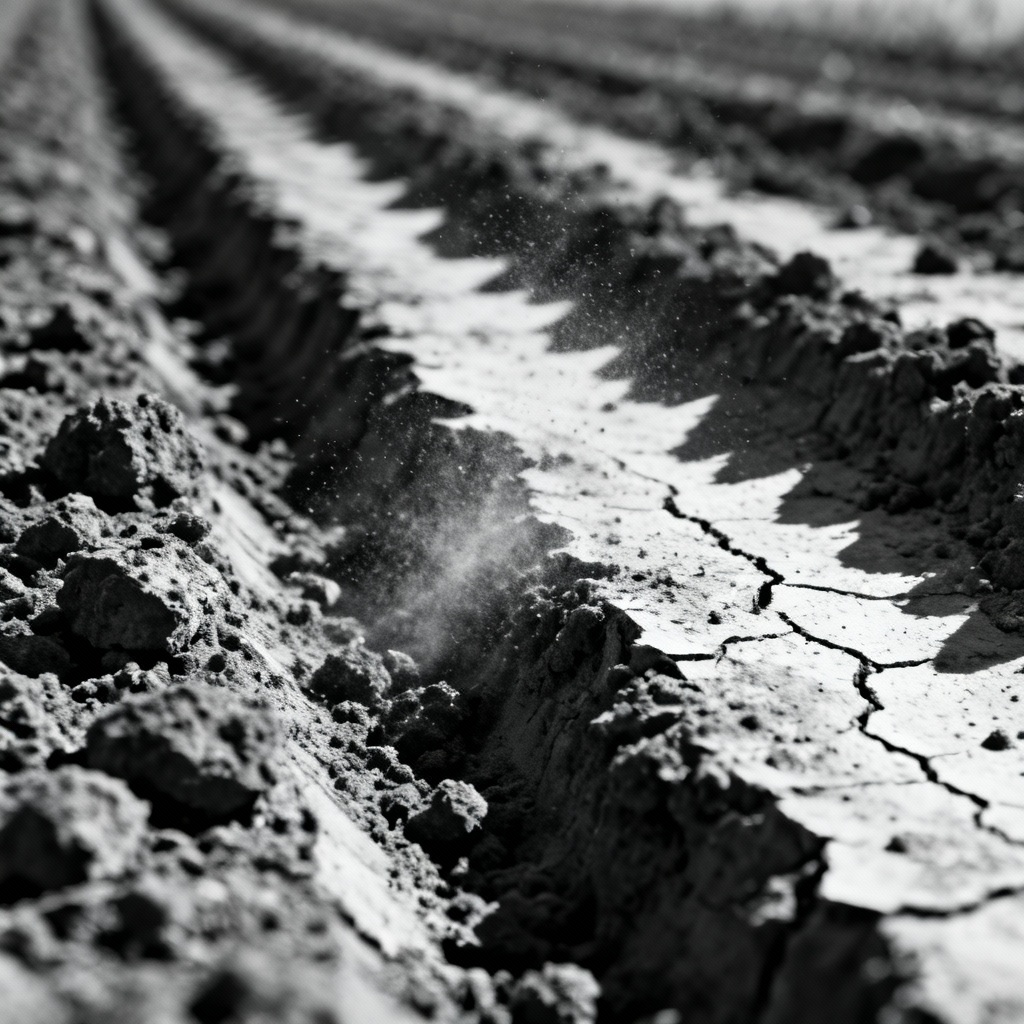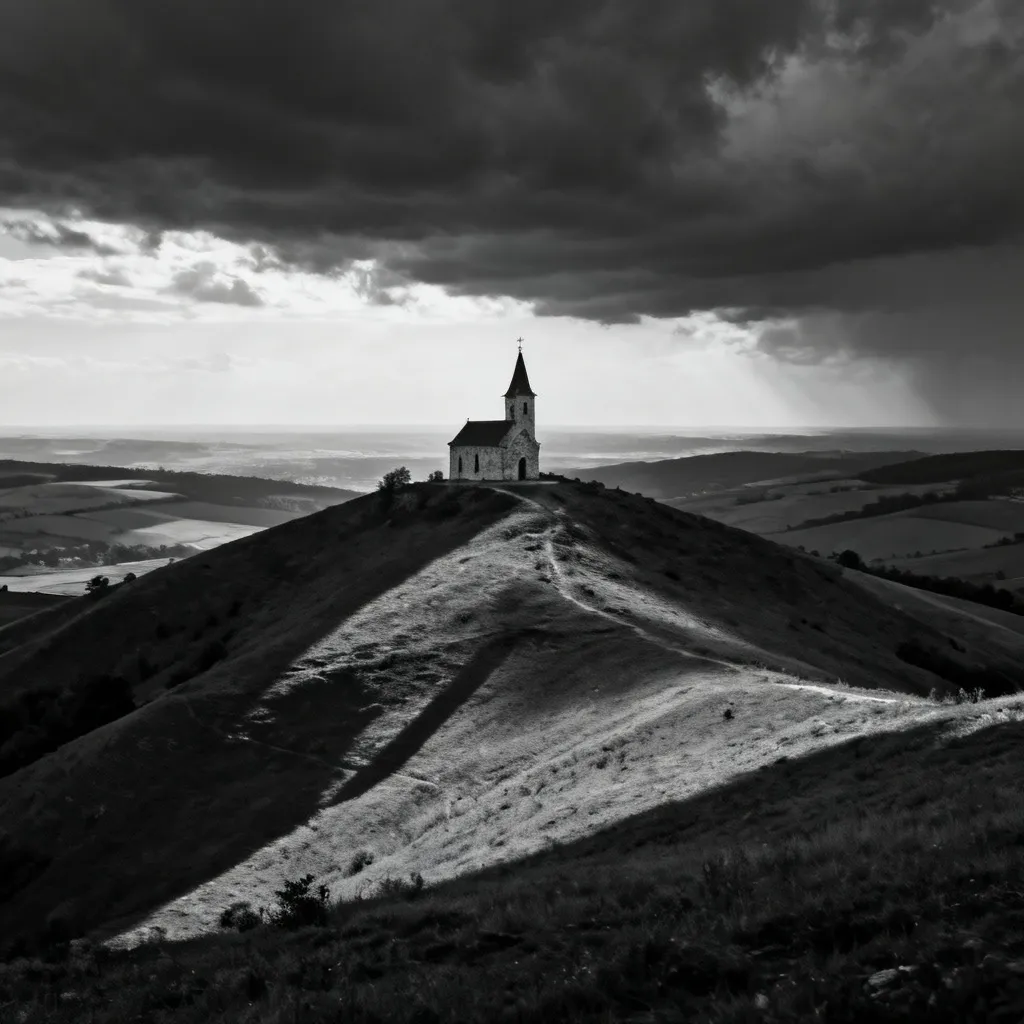Petra Homolková: Moravian Landscapes, Family Legacy, and the Evolution of Czech Photography
The world of Czech photography has long been distinguished by its depth of philosophical inquiry, technical mastery, and a profound relationship with the central European environment. Today, a new generation of artists is expanding this heritage, with Petra Homolková emerging as a key figure translating traditional forms into a contemporary, contemplative idiom.
Homolková stands at a compelling intersection, drawing deeply from the artistic traditions of the past while pioneering modern aesthetic sensibilities. Her most celebrated works center on the captivating, undulating Moravian landscapes, a region that is simultaneously her primary subject and a core part of her identity. This article delves into the unique resonance of her photography, examining how the threads of national history, the emotional weight of a direct family legacy, and the unique geography of Moravia converge in her distinguished body of work.
The Vision of Petra Homolková: A Study in Light and Subjectivity
Homolková's photographic work moves beyond mere pictorial representation to a nuanced exploration of subject-viewer dialogue. Her distinct visual style often employs an intentionally minimal palette and meticulous compositional restraint, crafting an atmosphere that feels both expansive and deeply personal.
A signature of her technique is the strategic use of shallow depth of field, frequently executed with a telephoto lens on her Moravian landscapes compositions, abstracting the famed rolling hills into rhythmic bands of color and texture. This approach reduces the landscape from a sweeping panorama into essential shapes, forcing a meditation on the formal qualities of light and line, much like abstract painting. She typically chooses the ephemeral light of early morning or twilight, imbuing the fields with a mood of quiet reverence or poignant melancholy.
Focus on Key Themes Beyond Landscape
While landscape provides the setting, Homolková’s deeper focus is on broader themes of memory and temporal change. Her work often contrasts the monumental, enduring nature of the earth with fleeting, temporary human interventions. In the series Inherited Furrows, for instance, the traces of agriculture become metaphors for generational labor and the transient marks of time on the land.
In her less-publicized documentary work, such as The South Wind's Return, she captures solitary human elements—a lone white chapel on a ridge or an abandoned farm implement—to introduce a commentary on identity and displacement. This balance of the monumental and the human connects her thematic concerns directly to the philosophical underpinnings of older Czech photography.
Critique and Reception
Critically, Homolková's work is celebrated for bridging the gap between historical romanticism and modern formal abstraction. She has gained traction in the contemporary art market not for dramatic imagery, but for profound stillness, offering a visual antidote to the saturated speed of modern digital photography. Major art reviewers note her sophisticated ability to evoke an emotional response with sparse visual data.
Her career has been defined by notable international recognition, including the installation Horizon as Metaphor which premiered in a major European gallery, marking her elevation to a major artist within Central European visual culture. The commercial success of her limited-edition prints attests to the global appetite for this contemplative strain of art.

Moravian Landscapes: More Than a Setting, a Character
The region of Moravia is far more than a picturesque backdrop; it is an enduring pillar of the national soul, with deep roots in Czech culture. Historically, Moravia has represented the agrarian heartland, a symbol of stability and rural identity distinct from the urban-centric political narrative of Bohemia.
Historical and Cultural Significance
The iconic, undulating agricultural landscape, particularly in South Moravia, is often referred to affectionately by photographers as "Moravian Tuscany." The hills provide perfect natural lines and shapes that photographers exploit to create intensely graphic composition. This visual complexity has elevated the region to one of the most significant outdoor studios in Central Europe.
The cultural connection lies in the rhythm of its seasons—the collective memory held within the yearly cycle of sowing, growing, and harvesting. Capturing this place is seen by many local artists as an act of heritage preservation.
Homolková’s Specific Engagement with the Region
Homolková’s approach distinguishes itself by highlighting the interplay between seasonal change and the abstract patterns these shifts create. In early spring, the region's canola fields turn outrageously yellow against green wheat, which she isolates using her telephoto perspective to create vibrant, layered abstractions. The autumn, by contrast, brings richly-hued, plowed soil, creating strong brown lines and starker contrasts, which she favors for monochrome pieces.
Her eye seeks out what the terrain suggests—geometric simplicity amidst organic complexity. She consistently returns to the same key locations, often a lonely tree or a cluster of vineyards, creating an archive that maps not just the change of season but the passage of time over the subject itself.

Comparison and Technique
While photographers like Jaroslav Hora have won accolades for capturing the sweeping "Tuscany" beauty of the hills, Homolková’s work shares a more abstract sensibility with landscape artists focused on geometry, such as those from the Nový Objektiv generation, albeit with a warmer, contemporary palette. She leans into the required technique of utilizing long lenses (300mm and up) to compress perspective from one hill to the adjacent ones, thus exaggerating the wavelike, rhythmic nature of the slopes.
Her "actionable tips" for aspiring photographers emphasize simplicity and preparation:
- Tripod and Telephoto Focus: Use a sturdy tripod and a minimum of a 70-200mm lens to achieve the necessary compression for abstracting the hills.
- Light Timing: The magic often lies between seasons and in specific light, such as morning fog or the last moments of sunset—not high noon.
- Isolating Subjects: Don't try to capture the whole region. Focus on a single tree, a narrow section of rolling field, or a lone shadow line to strengthen the composition.
Tracing the Lineage: Petra Homolková in the Canon of Czech Photography
To understand Homolková is to place her against the formidable backdrop of Czech photography’s 20th-century history. This tradition, noted for its profound humanism, surrealistic bent, and technical dedication, sets a high bar for contemporary artists.
A Brief Overview of Key Figures
The history of photography in the Czech lands is punctuated by major stylistic innovations. František Drtikol was a modernist master known for his pioneering nudes and light-and-shadow work, aligning with Secession and Art Deco movements. The avant-garde experiments of the 1920s and 30s saw the emergence of Jaromír Funke and Jaroslav Rössler, who pushed photographic boundaries through abstract forms and modernist composition.
Later, the giants Josef Sudek and Josef Koudelka defined two key strands of the postwar period. Sudek was a poet of space and light, known for his elegiac, often neo-romantic, images of Prague, interiors, and Bohemian forests. Koudelka, born in a small Moravian town, became the voice of human condition and exile, with raw, humanist documentary work focusing on the Romani people and the 1968 Prague Invasion.
Alignment and Departure from Tradition
Homolková’s work demonstrates a conscious alignment with two major traditions: Sudek's devotion to a sense of place and Koudelka's Moravian roots, while embracing a more modern aesthetic.
- Sudek’s Legacy (Neo-Romanticism): She shares his intensely personal relationship with her primary subject, Moravia, finding the lyrical and the melancholic in common, unchanging scenes. Like Sudek’s focus on his own studio window, Homolková repeatedly frames the fields around her home, turning them into a contained universe.
- Koudelka’s Roots (Regional Identity): Though her visual output is far removed from Koudelka's intense documentary style, she connects through shared national identity. Koudelka’s profound attachment to a Moravian provincial background influenced his capacity to connect with the ‘exiled’ people he photographed, an intense regionalism that underpins Homolková's decision to forgo international settings for the hills of her home region.
However, she largely departs from the powerful political commentary or surrealist dreamscapes of earlier Czech avant-garde. Her style is purely post-documentary, finding poetic art history not in the event of human life but in the quiet endurance of the agricultural land itself.

The Unfolding Scroll: Artistry Across Generations and the Family Legacy
The profound weight and responsibility that comes with an established creative name—the family legacy—is a unique challenge and advantage for Homolková. Her creative inheritance did not come from a lineage of famous fine artists, but from her grandfather, Vojtěch Homolka (1908–1985), an active, mid-20th-century photojournalist and documentary photographer primarily known in Moravian circles.
Artistic Contribution and Specific Influences
Vojtěch Homolka was known for his evocative photo-essays on rural life in the eastern part of Czechoslovakia, capturing the post-war changes in farming practices and the local folk customs with great respect. His medium was gritty, observational black-and-white documentary photography, a style built on direct observation. His surviving images are often stark portraits of hard-working farmers and sweeping, low-angle shots of communal harvests.
Petra's artistic debt is not in direct visual imitation, but in a shared, ethical methodology. Her grandfather’s exhaustive documentation of seasonal agrarian cycles forms a structural spine for her own abstract work; she is, in effect, transforming his documentation of action into a documentation of place enduring that action. She is applying an abstract lens to his documentary blueprint.
The Concept of ‘Creative Inheritance’
This link illuminates the concept of 'creative inheritance,' demonstrating that a legacy is not only about mastering a technical skill but about adopting a unique, guiding perspective. Her grandfather's meticulousness in cataloging a changing social-scape taught Petra the power of long-term observation and serial documentation.
This family legacy means Homolková is constantly juxtaposing the 'before' of her grandfather's realist view with her 'now' of abstract reflection. The parallel between her refined, digitally-composed abstractions and her ancestor’s sharp, historical black-and-white prints offers a valuable, cross-generational case study in how the sense of place can transcend changes in technology and artistic fashion, guiding the evolution of Czech photography forward from deeply rooted perspectives.
Conclusion: Shaping the Future from Rooted Perspectives
Petra Homolková’s contribution to the contemporary scene is significant, defined by both her exceptional technical skill in managing composition and light, and her profound thematic depth. She has succeeded in reinvigorating the genre of Moravian landscapes not merely by documenting beauty, but by stripping it down to an existential exploration of line, time, and inherited memory.
Her work stands as a testament to the intersection of the historical family legacy and the sweeping modern horizon. By consciously choosing to frame the small-scale, personal landscape of Moravia in conversation with the giants of the past—from Sudek's solitude to Koudelka's provincial focus—Homolková charts a path forward for Czech photography. Her photography shows that national identity in art remains vital, expressed best not through loud declarations, but through quiet, dedicated observation of the earth and the traces of history upon it. Her enduring impact lies in reminding viewers of the profound poetry found in stillness and continuity.
